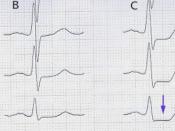The Psychosocial Context of Health 1 Discuss two concepts one Psychological and one sociological and their relevance to Osteopathic Practice Submission Date 4th February 2001 2885 words THE PSYCHOSOCIAL ASPECTS OF STRESS AND GENDER INTRODUCTION The word "ÃÂstress' means many different things to many different people. A layperson may define stress in terms of pressure or tension. A physicist may regard it as a matter of forces and vectors acting around a body. Physiologists tend to define stress in terms of its effects on the neuroendocrine system, or something that provokes a change in the body's homeostatic balance. Psychologists have, over the years, defined stress in several ways. Contemporary views have at their core the concept of stress as something that brings about biochemical, physiological, behavioural and psychological changes. A differentiation is made between an external or environmental situation (stressor) and the response of an individual to that stressor. Researchers have also differentiated between stress responses which are harmful and damaging (distress) and responses which are positive and helpful (eustress).
The most commonly used definition of stress was developed by Lazarus and Launier (1978). To them stress was "ÃÂa transaction between people and the environment' STRESS MODELS Over the last century several models of stress have been proposed. Each lays a different emphasis on physiological and/or psychological variants and may weigh the importance of events and situations differently.
FIGHT OR FLIGHT This was one of the earliest suggested models and is quite probably the most widely recognised. Cannon (1932) suggested that external threats resulted in specific physiological processes being automatically activated in the body to bring about a state of physical arousal. This state of arousal prepared an individual for flight from the stressful situation or increased its ability to fight.
GENERAL ADAPTATION SYNDROME Two decades later Hans Selye developed...


